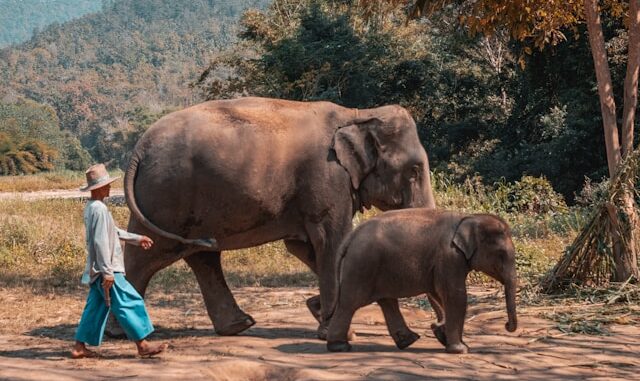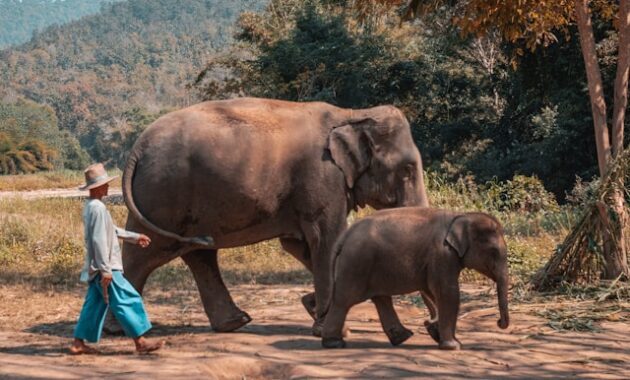
Nestled in Thailand’s northeastern region, the provinces of Surin and Ubon Ratchathani offer a captivating blend of cultural heritage, traditional craftsmanship, and vibrant festivals. These provinces, part of the Isan region, provide an authentic glimpse into Thailand’s diverse cultural mosaic.
Surin: The Land of Elephants and Silk
The Elephant Culture
Surin is renowned as the “Land of Elephants,” reflecting the deep bond between the local communities and these majestic creatures. The annual Surin Elephant Round-Up is a testament to this relationship, attracting visitors worldwide. This event showcases the skills of the Kui people, traditional elephant handlers, in orchestrating parades, mock battles, and demonstrations of logging techniques. The festival not only entertains but also educates attendees about the historical significance of elephants in Thai society.

Traditional Silk Weaving
Another cornerstone of Surin’s cultural identity is its exquisite silk production. Villages such as Ban Tha Sawang are famed for their intricate silk weaving techniques, producing textiles that have adorned royalty. Visitors can observe artisans at work, creating patterns that have been passed down through generations, and even purchase these beautiful fabrics as souvenirs.
Cultural Festivals
Surin’s cultural calendar is dotted with festivals that reflect its rich heritage. The Phanom Sawai Mountain Festival is a significant event where locals and visitors alike participate in merit-making ceremonies, traditional music, and dance performances, all set against the backdrop of the revered Phanom Sawai mountain.
Ubon Ratchathani: A Tapestry of Faith and Festivity
The Candle Festival
Ubon Ratchathani is perhaps best known for its Candle Festival, held annually to mark the beginning of the Buddhist Lent. This festival features elaborate candles carved with intricate designs, often depicting scenes from Buddhist mythology. The candles are paraded through the city, accompanied by traditional music and dance, creating a mesmerizing spectacle that highlights the province’s artistic prowess and deep-rooted Buddhist traditions.
Temples and Spiritual Sites
The province is also home to numerous temples that serve as centers of spiritual life and community gatherings. Temples such as Wat Thung Si Mueang and Wat Nong Pa Phong offer insights into local religious practices and architectural styles. These sites often host festivals and ceremonies that are integral to the community’s cultural fabric.
Culinary Traditions
The culinary landscape of Ubon Ratchathani is a reflection of its cultural diversity. The province is known for its unique Isan cuisine, which includes dishes like Som Tam (spicy papaya salad), Larb (minced meat salad), and Sticky Rice. The vibrant night markets offer a plethora of street food options, allowing visitors to immerse themselves in the local flavors.
Preservation of Traditions
Both Surin and Ubon Ratchathani have made concerted efforts to preserve and promote their cultural heritage. Communities continue to practice traditional crafts, music, and dance, ensuring that these art forms are passed down to future generations. Festivals play a crucial role in this preservation, serving as platforms for cultural expression and community cohesion.
Conclusion
A journey through Surin and Ubon Ratchathani offers an enriching experience that delves into Thailand’s cultural heartland. From the majestic elephants and exquisite silk of Surin to the vibrant festivals and spiritual sanctuaries of Ubon Ratchathani, these provinces provide a unique insight into the traditions and lifestyles that have shaped their identities. Visitors are invited to immerse themselves in this rich tapestry, gaining a deeper appreciation for the enduring cultural heritage of Thailand’s northeastern region.